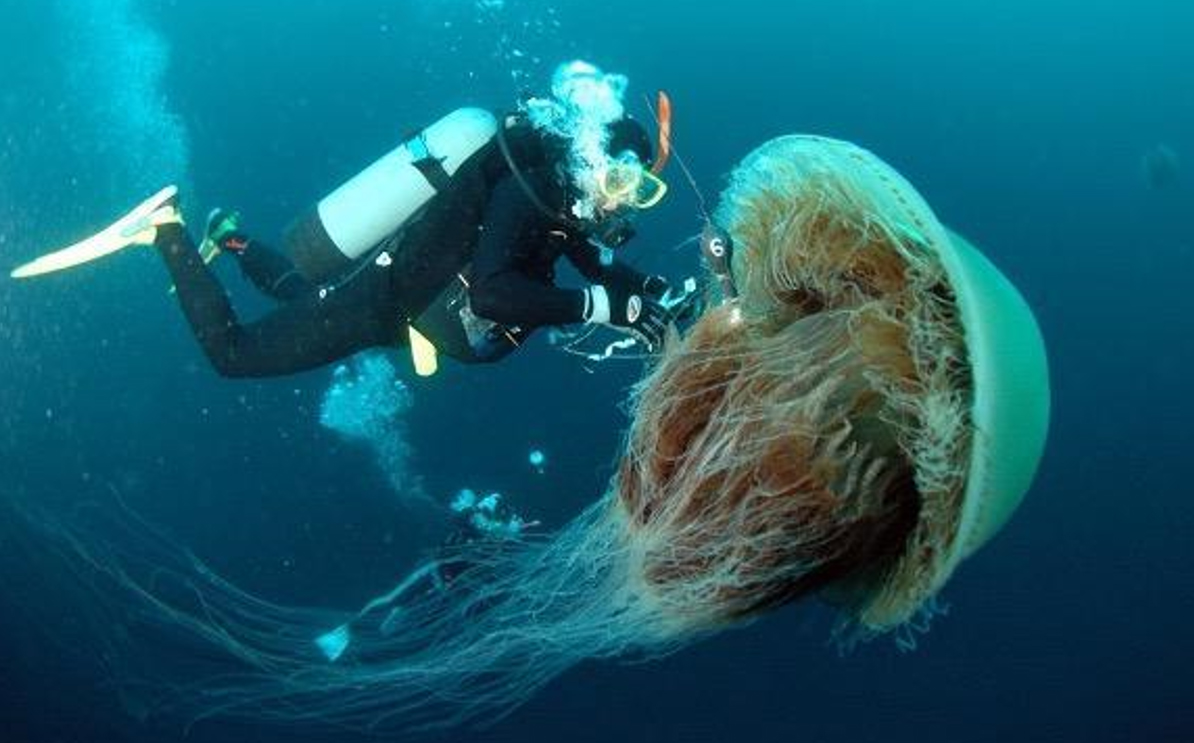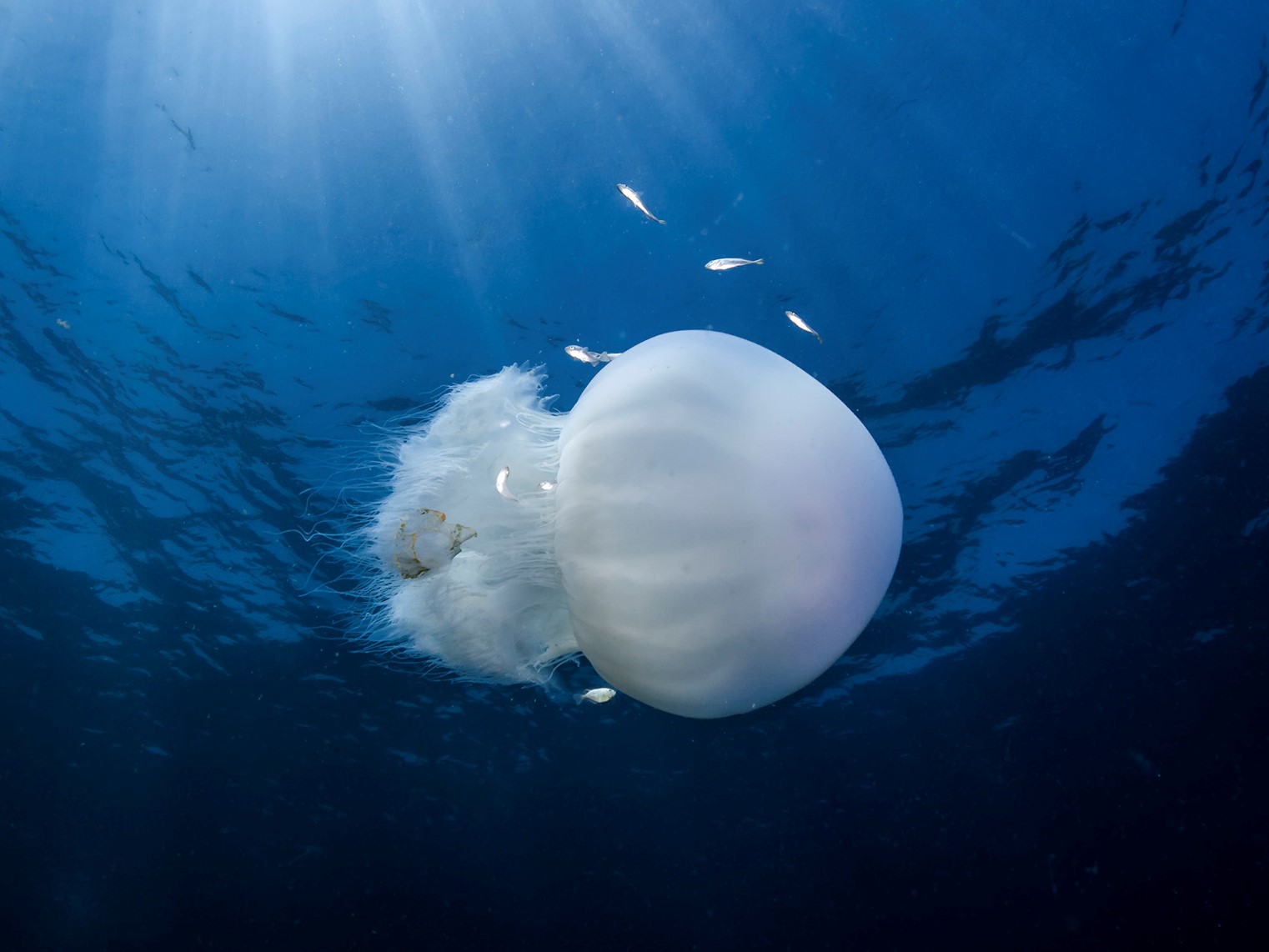

Adult Nemopilema nomurai: the order can have species up to 2 meters in diameter (photo: Yomiuri Shinbun)
Among the 36 authors, André Morandini, director of the Center for Marine Biology of the University of São Paulo, presents the results of studies supported by FAPESP.
Among the 36 authors, André Morandini, director of the Center for Marine Biology of the University of São Paulo, presents the results of studies supported by FAPESP.

Adult Nemopilema nomurai: the order can have species up to 2 meters in diameter (photo: Yomiuri Shinbun)
By André Julião | Agência FAPESP – An invertebrate that can reach 2 meters in diameter does not usually go unnoticed. However, the 91 currently recognized species of jellyfish in the order Rhizostomeae still lacked an up-to-date summary of their natural history.
To this end, a group of 36 authors from various parts of the world recovered and updated the work left by the German zoologist Max Egon Thiel (1898-1979), including an unpublished volume kept by his family, which includes a son and grandson who also sign the new work.
The result of five years of work, Advances in Rhizostomeae Jellyfish Research is edited by André Morandini, director of the Center for Marine Biology of the University of São Paulo (CEBIMar-USP) and professor at the Institute of Biosciences (IB) of the same institution.
Morandini also signs three chapters together with other authors and one alone, the fruit of his research on jellyfish over the last 15 years, partly supported by FAPESP (10/50174-7, 13/05510-7, 15/21007-9, 19/20042-6, 23/12416-9) (read more at: agencia.fapesp.br/50739 and agencia.fapesp.br/37491).
“The feedback from the international community of jellyfish researchers is excellent and recognizes the publication of this book as a milestone in the knowledge of this field of study, reflecting the spirit of Thiel’s work,” says the researcher, referring to the German author who was curator of the aquatic invertebrate collection at the Museum of Zoology in Hamburg between 1926 and 1963.
Thiel wrote a seven-volume series on jellyfish, first published in 1936 and 1938. Because of the Second World War, the work was not published again until 1959 and 1962. In 1977, an updated bibliography was released by Thiel, but a final volume remained unpublished.
The new publication not only updates Thiel’s unpublished monograph, originally typed on a typewriter, but also provides a facsimile of the volume that had been in storage for so many decades.

This volume revives the work of German zoologist Max Egon Thiel, who published his first volume on jellyfish in 1936 (photo: Thiel family archive)
“Jellyfish experts from all over the world have shown great interest in Thiel’s unpublished text, but they were also eager for an update on their knowledge of rhizostome jellyfish,” explains Götz B. Reinicke, one of the editors, a researcher at the Ocean Museum in Germany and Thiel’s grandson.
The adaptability and importance of Rhizostomeae species in planktonic ecosystems has recently attracted attention in some regions, such as the invasive nomad jellyfish (Rhopilema nomadica) in the Mediterranean and the Nomura jellyfish (Nemopilema nomurai) in Japan.

Rhopilema nomadica, one of 92 species of the jellyfish order featured in a new book (photo: Shevy Rothman)
Their success as predators and their role in the ocean’s food chains have raised awareness of the economic potential of these animals. One of the chapters in the book focuses on the use of these jellyfish as food and also as a source of bioactive compounds for use in medical and biotechnological applications.
“The detailed insights into the biology of these fascinating animals and their ecological and economic role make this book a valuable source of knowledge for researchers and anyone interested in the marine environment,” concludes Sabine Holst, co-editor of the volume and researcher at the German Center for Marine Biodiversity Research Senckenberg in Hamburg.
The entire book or individual chapters can be purchased at: www.sciencedirect.com/bookseries/advances-in-marine-biology/vol/98/suppl/C.
Republish
The Agency FAPESP licenses news via Creative Commons (CC-BY-NC-ND) so that they can be republished free of charge and in a simple way by other digital or printed vehicles. Agência FAPESP must be credited as the source of the content being republished and the name of the reporter (if any) must be attributed. Using the HMTL button below allows compliance with these rules, detailed in Digital Republishing Policy FAPESP.





